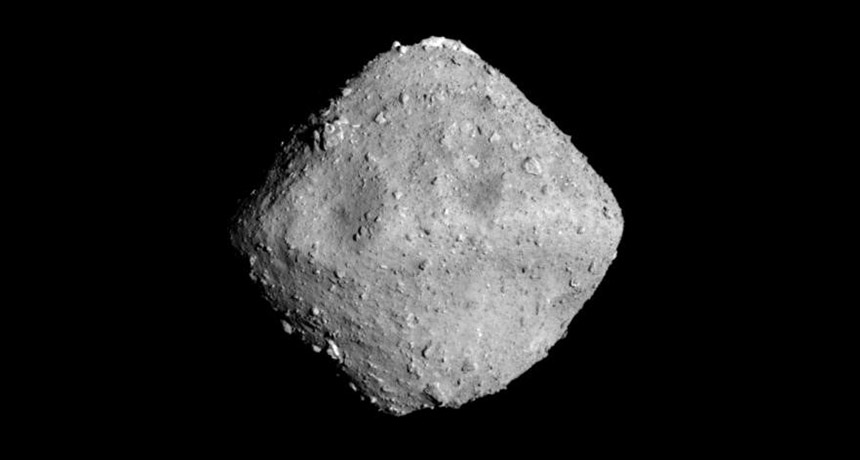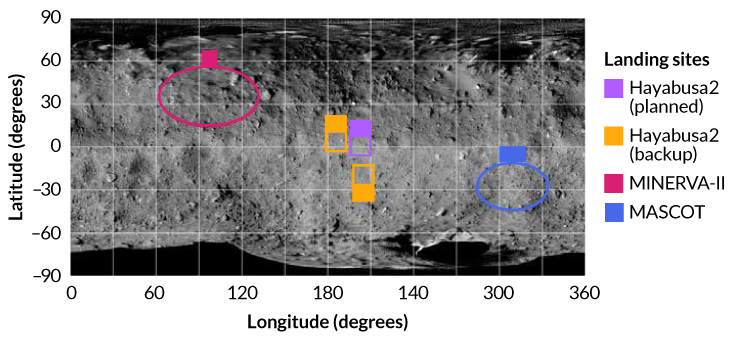Here’s where the Hayabusa2 spacecraft will land on the asteroid Ryugu
The probe will visit the surface to collect dust to be examined back on Earth

UP CLOSE AND PERSONAL The near-Earth asteroid Ryugu, as seen on June 26, is small, diamond-shaped and covered in boulders. Japan’s Hayabusa2 probe will touch down on Ryugu’s surface for the first time in October.
JAXA, Univ. of Tokyo and collaborators








